An aromatic compound (A),C8H10, on oxidation with acidic KMnO4 gives dibasic acid. The compound (A) on nitration gives three isomeric nitro derivatives. The compound (A) is:
a.o-Xylene
b.m-Xylene
c.p-Xylene
d.Ethyl benzene
The correct Answer is:B
To solve the question about the aromatic compound (A), C₈H₁₀, we will follow these steps:
Step 1: Identify the structure of compound (A)
Since compound (A) is an aromatic compound with the molecular formula C₈H₁₀, it must contain a benzene ring. The presence of two additional carbons (from the formula) suggests that there are two methyl groups attached to the benzene ring. The possible structures for C₈H₁₀ can be:
- Ortho-xylene (1,2-dimethylbenzene)
- Meta-xylene (1,3-dimethylbenzene)
- Para-xylene (1,4-dimethylbenzene)
Step 2: Analyze the oxidation reaction
The question states that upon oxidation with acidic KMnO₄, compound (A) gives a dibasic acid.
- Ortho-xylene and para-xylene would yield monobasic acids (benzoic acid) upon oxidation.
- Meta-xylene, however, can be oxidized to isophthalic acid, which is a dibasic acid.
Step 3: Analyze the nitration reaction
The compound (A) also gives three isomeric nitro derivatives upon nitration.
- Ortho-xylene would yield two isomers (ortho and para).
- Para-xylene would yield only one isomer (para).
- Meta-xylene would yield three isomers (one meta and two ortho).
Step 4: Conclusion
Since meta-xylene (1,3-dimethylbenzene) can be oxidized to isophthalic acid (a dibasic acid) and can produce three isomeric nitro derivatives upon nitration, we conclude that the compound (A) is meta-xylene.
Final Answer
The compound (A) is meta-xylene (1,3-dimethylbenzene).
---
Since compound (A) is an aromatic compound with the molecular formula C₈H₁₀, it must contain a benzene ring. The presence of two additional carbons (from the formula) suggests that there are two methyl groups attached to the benzene ring. The possible structures for C₈H₁₀ can be:
- Ortho-xylene (1,2-dimethylbenzene)
- Meta-xylene (1,3-dimethylbenzene)
- Para-xylene (1,4-dimethylbenzene)
The question states that upon oxidation with acidic KMnO₄, compound (A) gives a dibasic acid.
- Ortho-xylene and para-xylene would yield monobasic acids (benzoic acid) upon oxidation.
- Meta-xylene, however, can be oxidized to isophthalic acid, which is a dibasic acid.
The compound (A) also gives three isomeric nitro derivatives upon nitration.
- Ortho-xylene would yield two isomers (ortho and para).
- Para-xylene would yield only one isomer (para).
- Meta-xylene would yield three isomers (one meta and two ortho).
Since meta-xylene (1,3-dimethylbenzene) can be oxidized to isophthalic acid (a dibasic acid) and can produce three isomeric nitro derivatives upon nitration, we conclude that the compound (A) is meta-xylene.
The compound (A) is meta-xylene (1,3-dimethylbenzene).
Topper's Solved these Questions
- REDUCTION AND OXIDATION REACTION OF ORGANIC COMPOUNDSBook:CENGAGE CHEMISTRY ENGLISHChapter:REDUCTION AND OXIDATION REACTION OF ORGANIC COMPOUNDSExercise:Exercise (Assertion And Reasoning)
Explore 10 Videos
- REDUCTION AND OXIDATION REACTION OF ORGANIC COMPOUNDSBook:CENGAGE CHEMISTRY ENGLISHChapter:REDUCTION AND OXIDATION REACTION OF ORGANIC COMPOUNDSExercise:Exercise Archives (Subjective)
Explore 26 Videos
- REDUCTION AND OXIDATION REACTION OF ORGANIC COMPOUNDSBook:CENGAGE CHEMISTRY ENGLISHChapter:REDUCTION AND OXIDATION REACTION OF ORGANIC COMPOUNDSExercise:Exercise (Multiple Correct)
Explore 35 Videos
- QUALITATIVE INORGANIC SALT ANALYSISBook:CENGAGE CHEMISTRY ENGLISHChapter:QUALITATIVE INORGANIC SALT ANALYSISExercise:Viva Voce Questions And Part-C (Analysis Of Cations)
Explore 42 Videos
- SOLID STATEBook:CENGAGE CHEMISTRY ENGLISHChapter:SOLID STATEExercise:Ex 1.2 (Objective)
Explore 9 Videos
Similar Questions
Knowledge Check
Which alkene on oxidation with acidic KMnO4 gives only acetic acid ?
ACH3=CH−CH3BCH3−CH=CH−CH3CEthyleneDPentene - 2
A hydrocation (A)(C8H10)(E) is a stream volatile compound and on nitration gives two mononitro derivatives. (A) gives the following reactions.
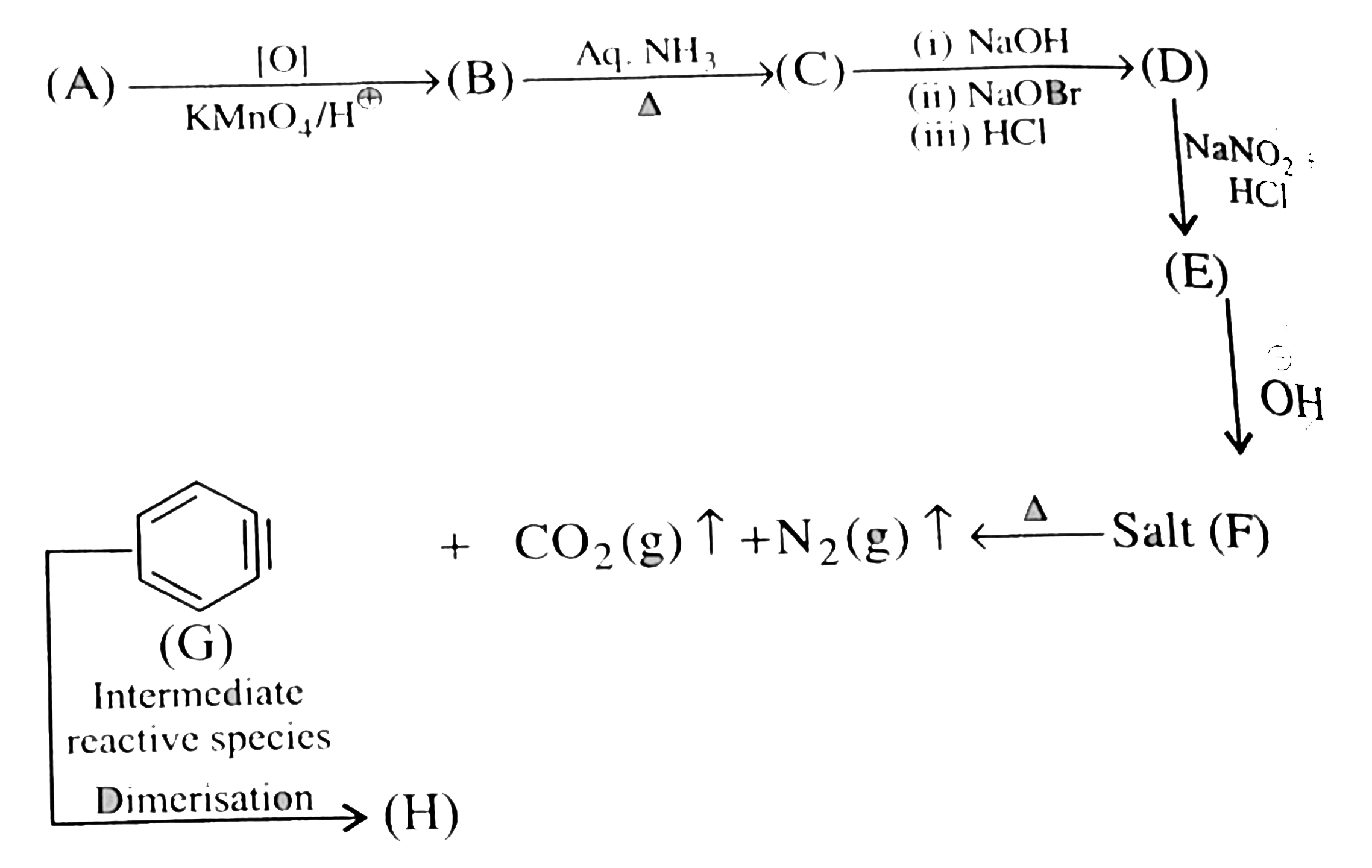
Compound (A) is:
View SolutionA hydrocation (A)(C8H10)(E) is a stream volatile compound and on nitration gives two mononitro derivatives. (A) gives the following reactions.
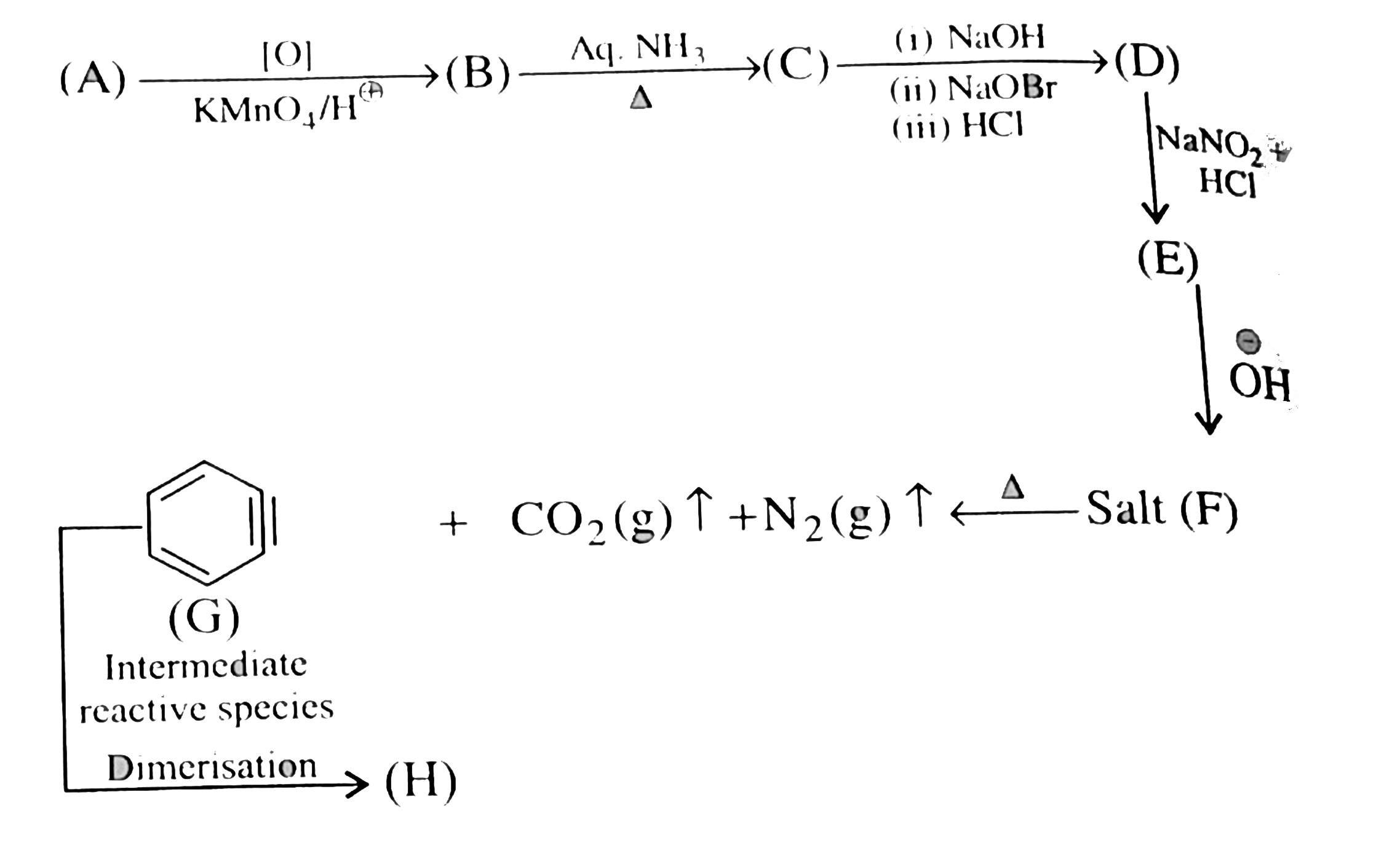
Compound (C) is:
View SolutionA hydrocation (A)(C8H10)(E) is a stream volatile compound and on nitration gives two mononitro derivatives. (A) gives the following reactions.
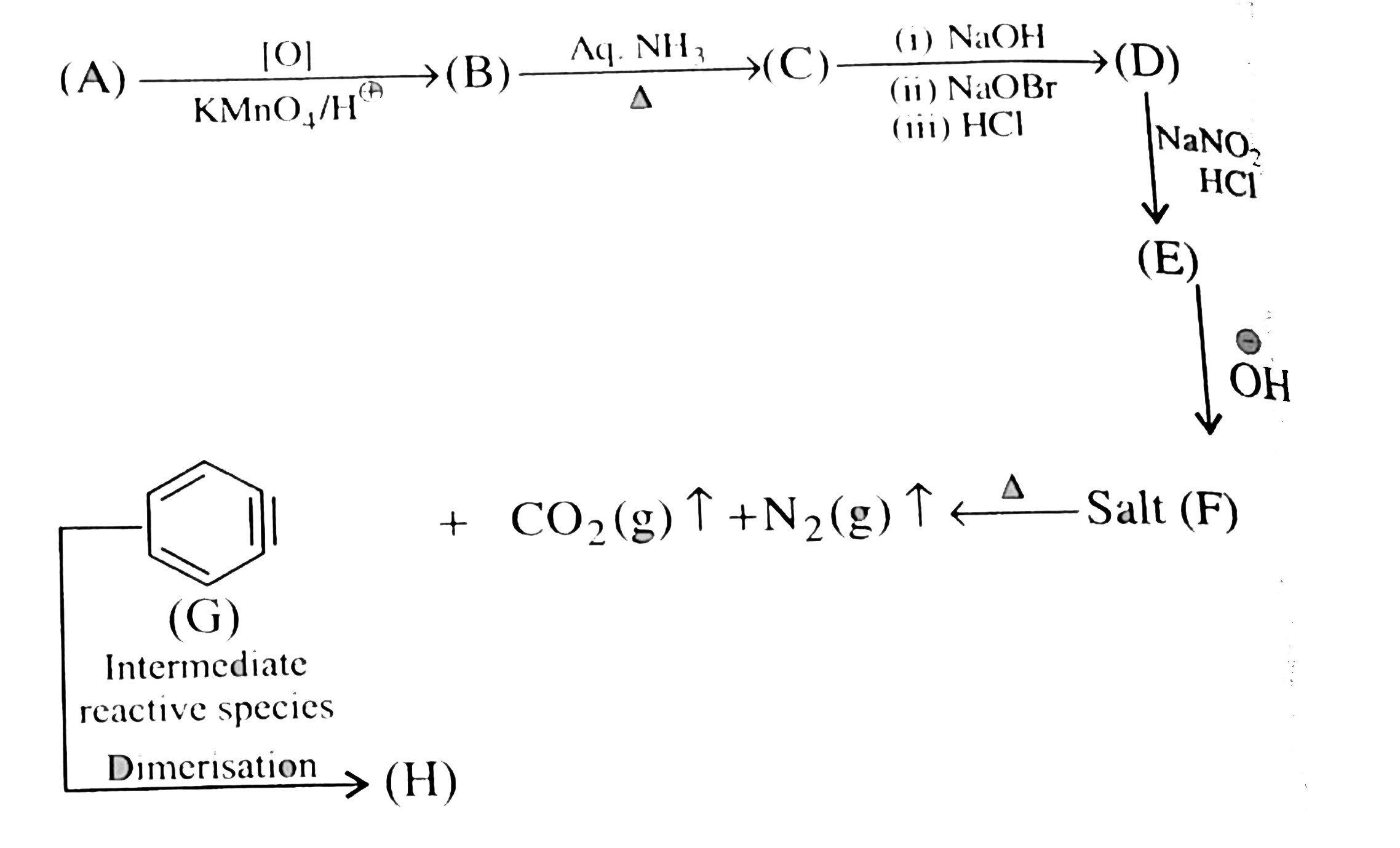
Compound (B) is:
View SolutionA hydrocation (A)(C8H10)(E) is a stream volatile compound and on nitration gives two mononitro derivatives. (A) gives the following reactions.
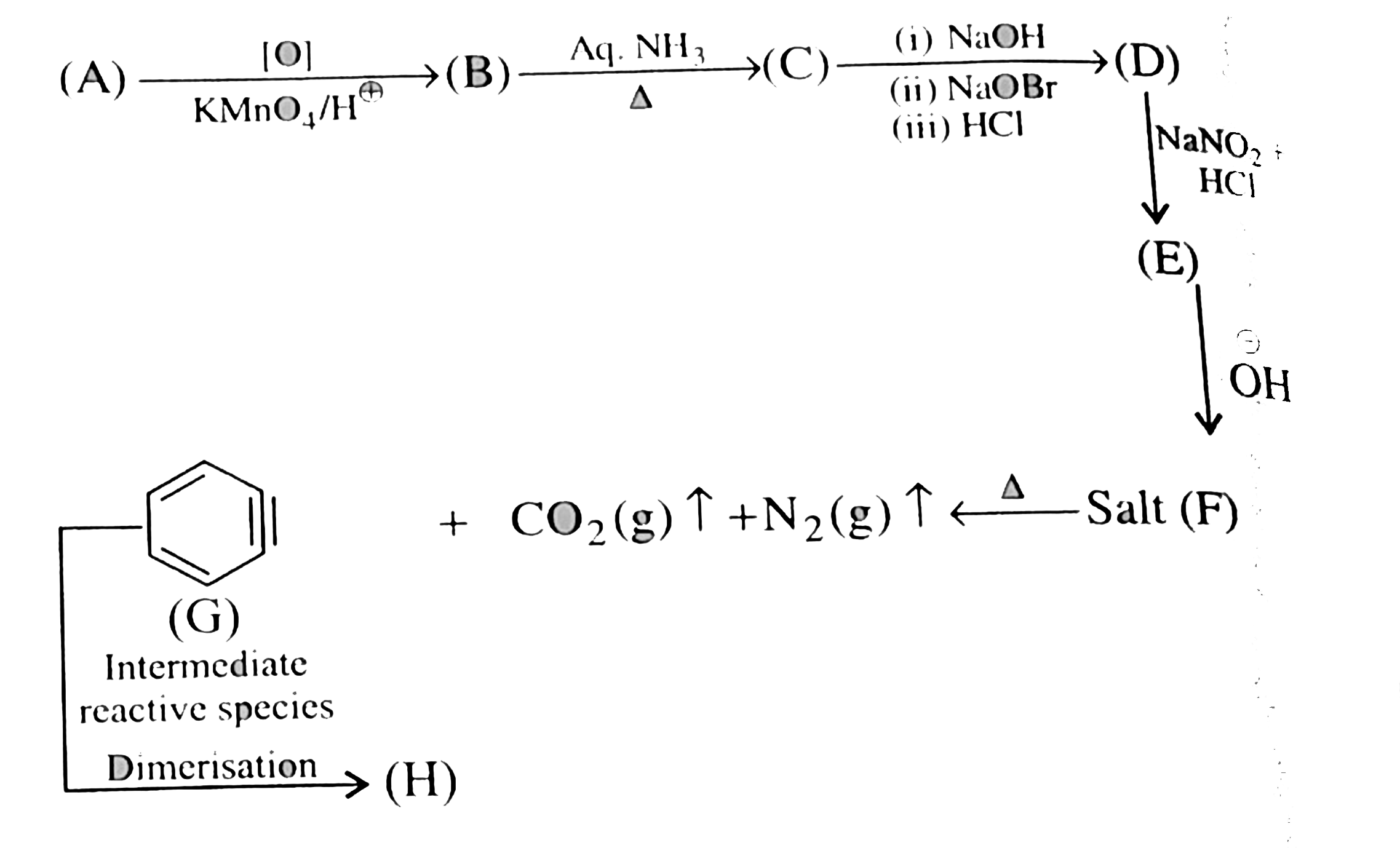
Compound (D) is:
View SolutionA hydrocation (A)(C8H10)(E) is a stream volatile compound and on nitration gives two mononitro derivatives. (A) gives the following reactions.
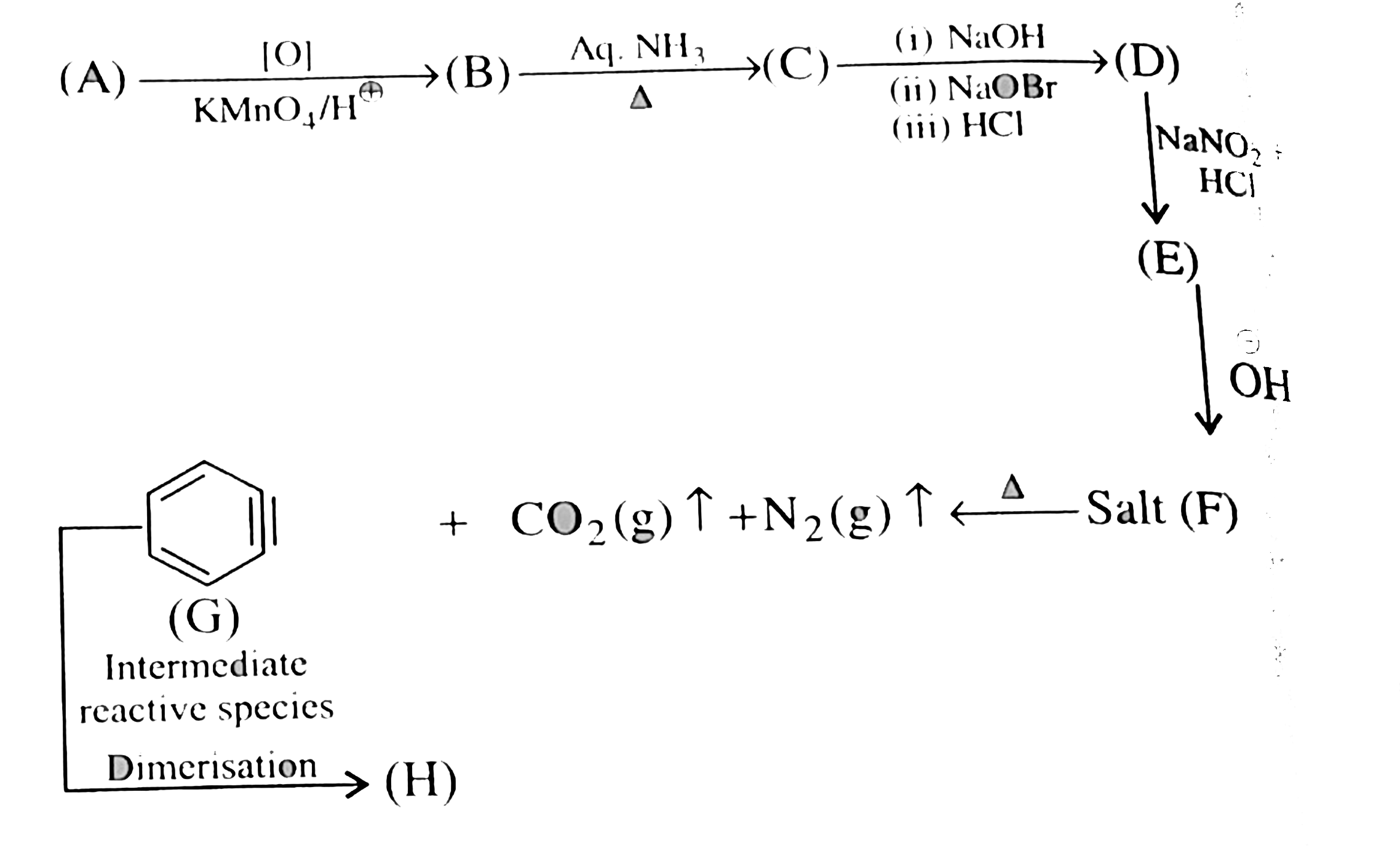
Compound (E) is:
View SolutionThe number of isomers of the aromatic compound C8H10 is :
View SolutionAn alkene on vigorous oxidation with KMnO4gives only propanoic acid. The alkene is :
View Solution
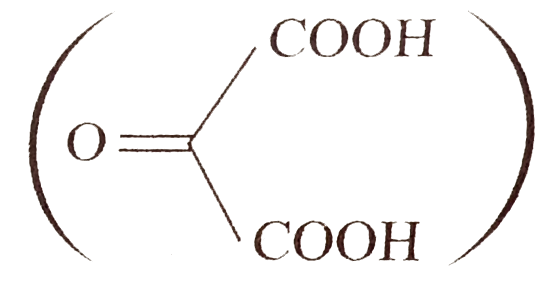 . Identify compound
. Identify compound